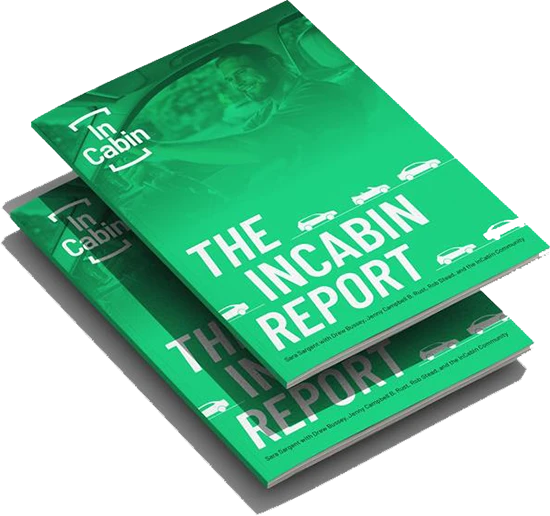
We caught up with Jeff Stout, Executive Director, Global Innovation at Yanfeng to gain insight into the Electric Vehicle Integration (EVI) concept, including the assembly process and sustainability options. Don’t miss Jeff’s presentation at InCabin USA 2024 where he will dive deeper into this topic.
1. How has the Electric Vehicle Integration (EVI) concept influenced the design and architecture of in-cabin user experience, particularly regarding interface integration and accessibility for drivers and passengers?
The EVI is a completely fresh take on what consumers’ interactions with typical HMI interfaces should look like. Since the entire HMI interface moves from a historically standard fixed central display with controls to a moving touch display mounted to the center console, the relationship and orientation between the occupants and the front of dash is liberated. This allows a large display to be mounted far forward with no need for the occupant to ever touch it, thereby enabling a significant increase in the users perception of spaciousness.
2. Could you elaborate on the streamlined assembly process enabled by the EVI concept and its potential benefits for automotive manufacturers in terms of efficiency, cost reduction, and adaptability to evolving technology?
With most of the HMI functions contained within the FC which is mounted to the seat sled, most of the interior can be mounted into the vehicle in one step. All of the difficult (and time consuming) assembly for the IP cockpit (either inside the vehicle as a layer build or outside the vehicle as a cockpit assembly) is fully eliminated. The structural attachments and all of the electrical connections can be made quickly to the b-pillar lowers. The door panels would remain somewhat traditional, but with slightly more HMI controls in the armrest. The assembly time, mass, and cost for everything in front of the users is essentially eliminated.
As a small point, the ability to execute a right hand drive variant would now be a very simple exercise with the steering arm being the only part that would need to be modified to by symmetrically opposite.
3. What sustainability solutions are integrated into the EVI concept, and how do they contribute to reducing the environmental footprint of electric vehicles, both during production and throughout their lifecycle?
The most obvious impact is the step change in the weight of the interior. We estimated over 11 kg of mass to be eliminated in the design as shown. For interiors, we have fought for years for every pound of mass we could find. To save almost 25 pounds, a completely new architecture is required.
In addition to mass, there are several other design considerations that emphasize sustainability. The door panel carriers utilize YF’s CHyM technology which utilizes natural fiber mats molded with zero offal in the forming process, so there is zero mat scrap for the carrier. This material is lightweight and can have a negative CO2 footprint as the materials absorb more CO2 in their growing phase than they produce in their in-use phase.
Finally, we re-thought the heating and cooling of the interior. We moved away from traditional IP mounted heat exchangers and went to a direct contact thermal comfort solution involving heated and cooled surfaces as well as conditioned air coming out of the Floor console sides and seat headrest so small amounts of air can have dramatic impacts on thermal comfort.
4. What are your expectations for the upcoming InCabin USA Conference next week, particularly in terms of networking opportunities, industry insights, and the latest trends in automotive interior design and technology?
Our industry is changing so fast that meet ups with other thought leaders at events like InCabin help facilitate the progression of technology to meet the future needs of automakers, and ultimately consumers. The level of change required to survive in the mobility space requires every tier and every customer to engage in this conversation to understand how best to position their future products. I can’t wait for the discussions that will be had at InCabin.
Jeff will also be appearing on a panel at InCabin on ‘What does next-generation in-cabin infotainment look like?’. Find out more.



